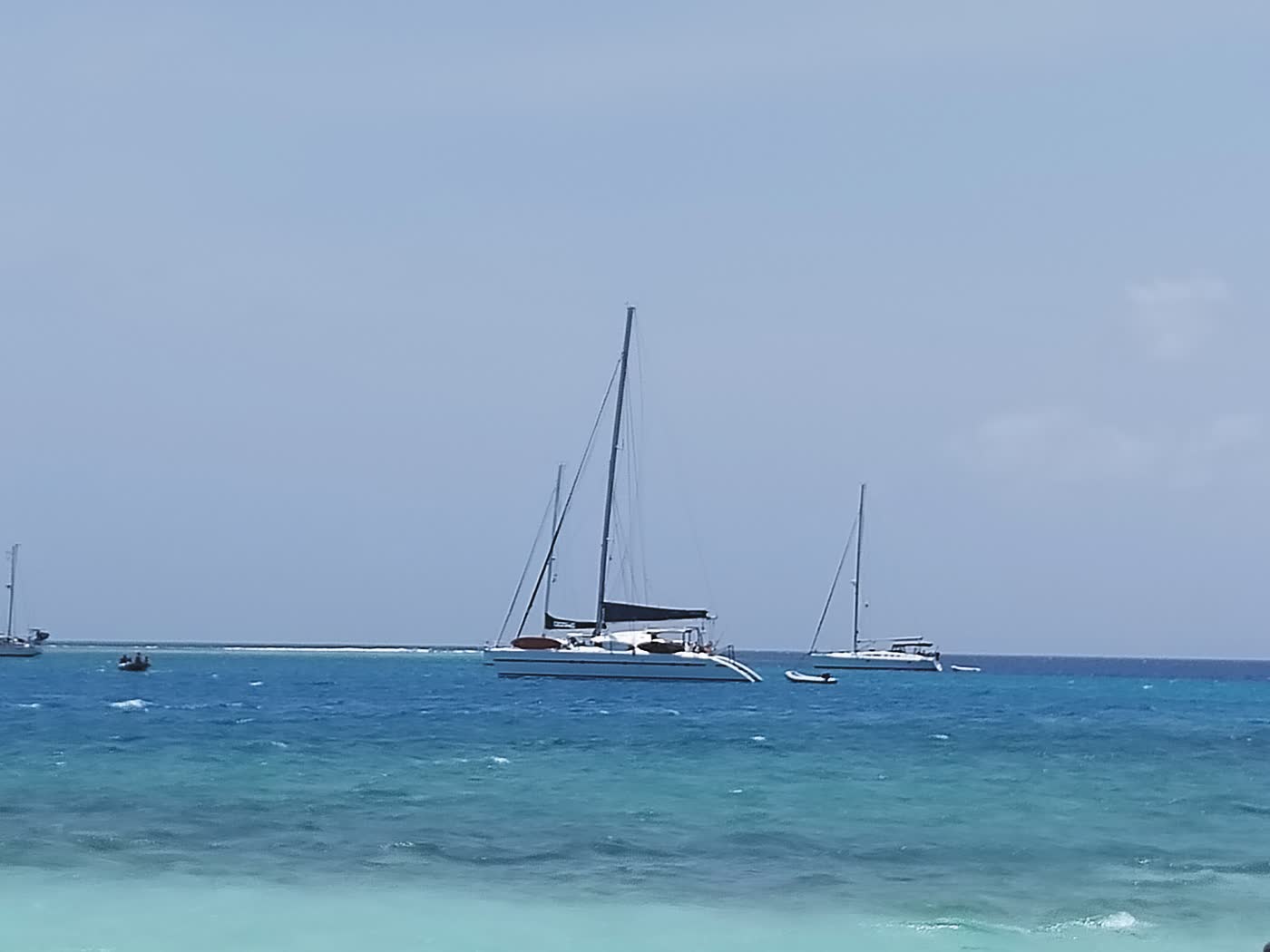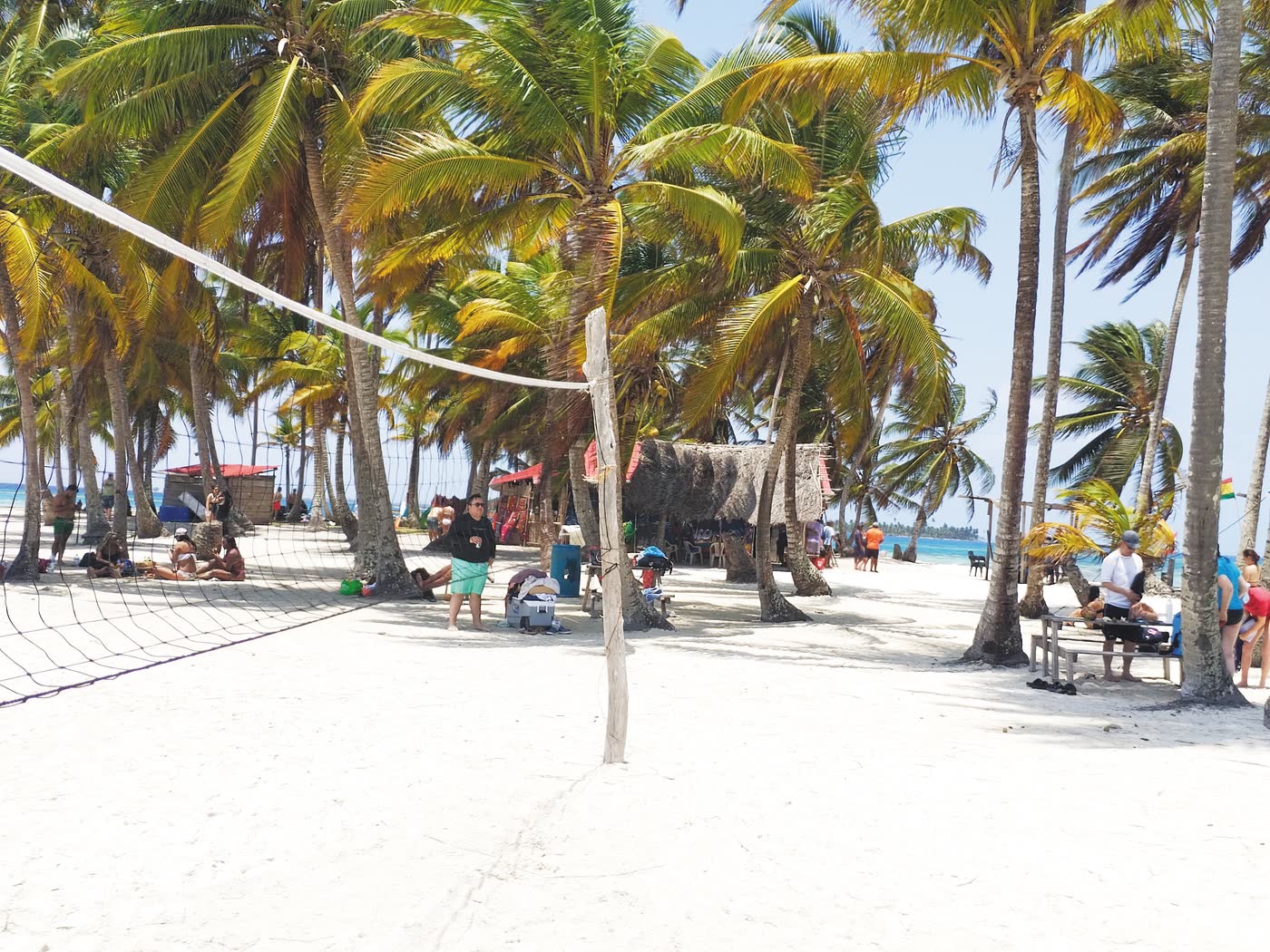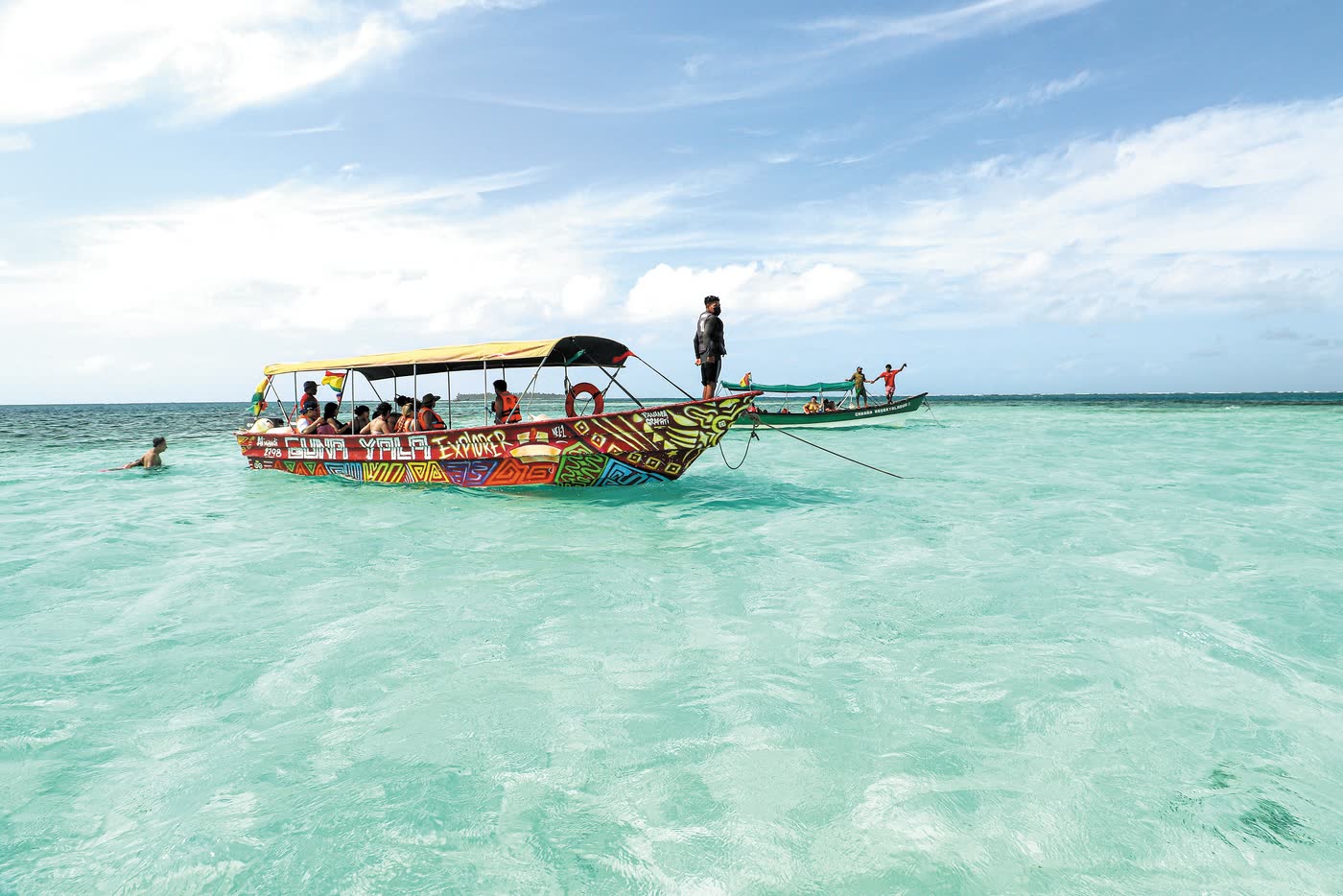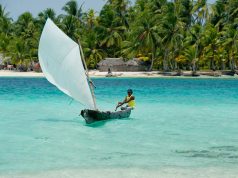White Sand Beaches, Natural Swimming Pools and a Sunken Ship Full of History
Known as “The Panama’s Maldives”. Its translucent turquoise green waters are also compared to the Philippine seas. Of course, unlike the Maldives with a very changing weather, in Guna Yala if it rains later it shines like a sunny day.
This archipelago is inhabited by the Gunas, an indigenous group with a semi-autonomously government. There are around 365 white sand islands in the Caribbean Sea, surrounded by coral reefs where thousands of fish give it more color. Fun fact, this paradise has one of the largest coconut plantations in the world.
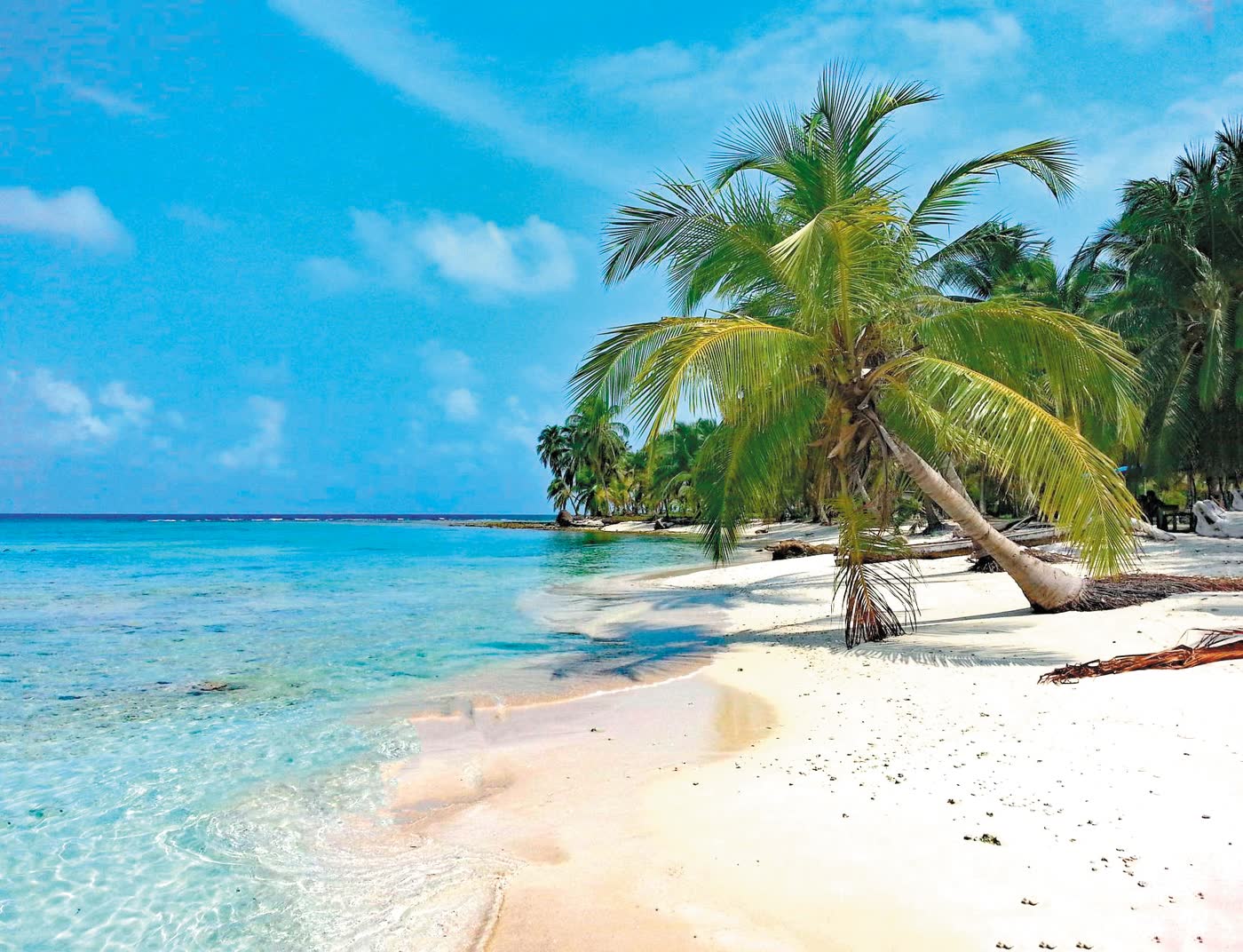
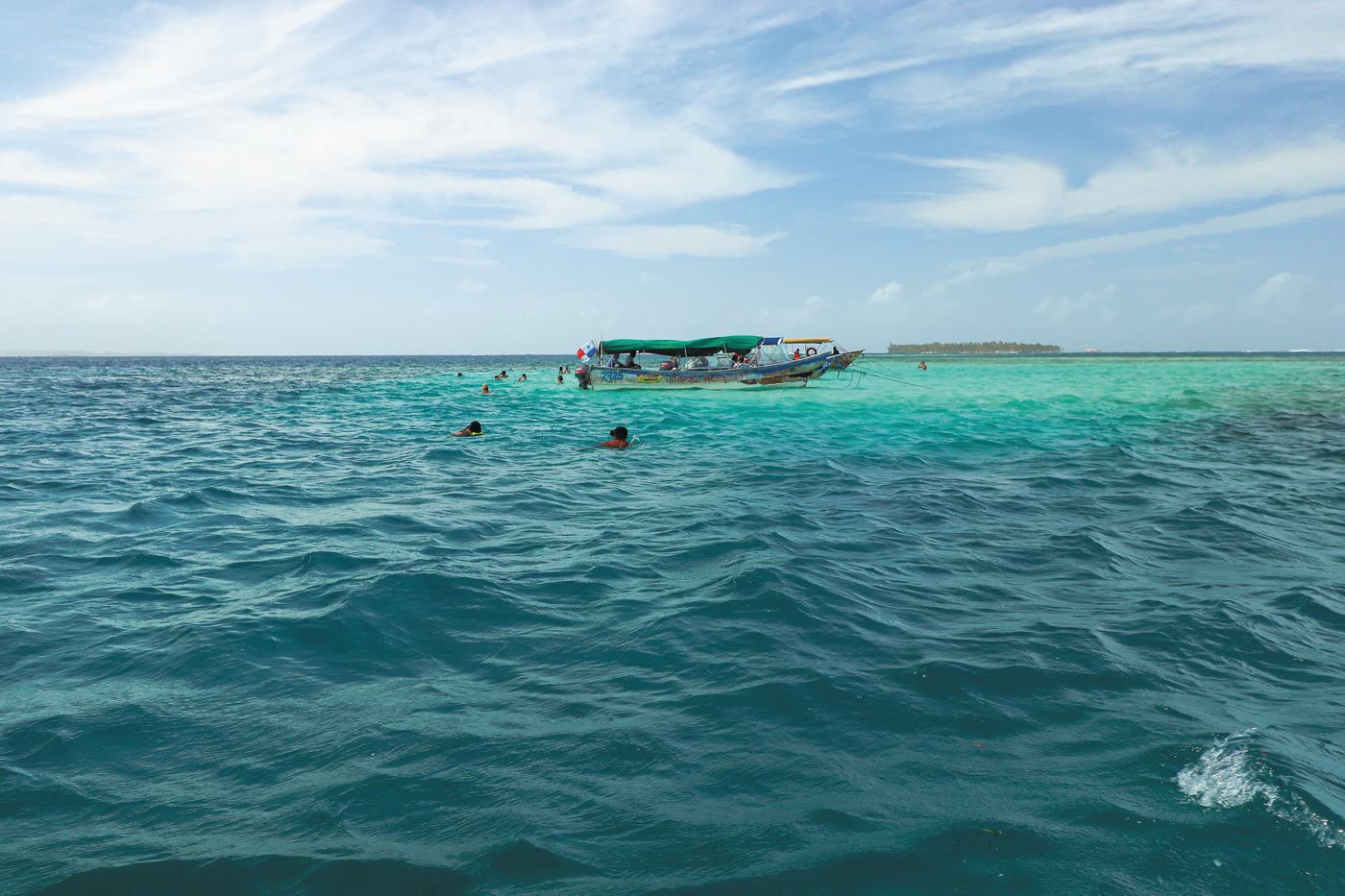
Puerto Carti
Whether for a day trip or to stay the night, to get to Guna Yala you must first arrive at Carti Port. The Gunas, who are the pioneers in community tourism in the country, have agreed to offer in their packages the most viable option to get to the port: a service that offers tourists to pick them up at their home or lodging between 5:00 a.m. and 6:00 a.m. in a 4 x 4 car for six passengers (shared trip) and take them to Carti Port. They will provide the information and the entry permit of each passenger confirming their approval and payment for the entrance to the Comarca and boarding tax. It is mandatory to pay a $20.00 tax per person. If you are of Panamanian origin or reside in the country, the tax is $5.00.
At Carti Port you take a boat to the islands in a shared journey (maximum of 12 people) with a duration that varies according to the distance of the island are heading to and the weather.
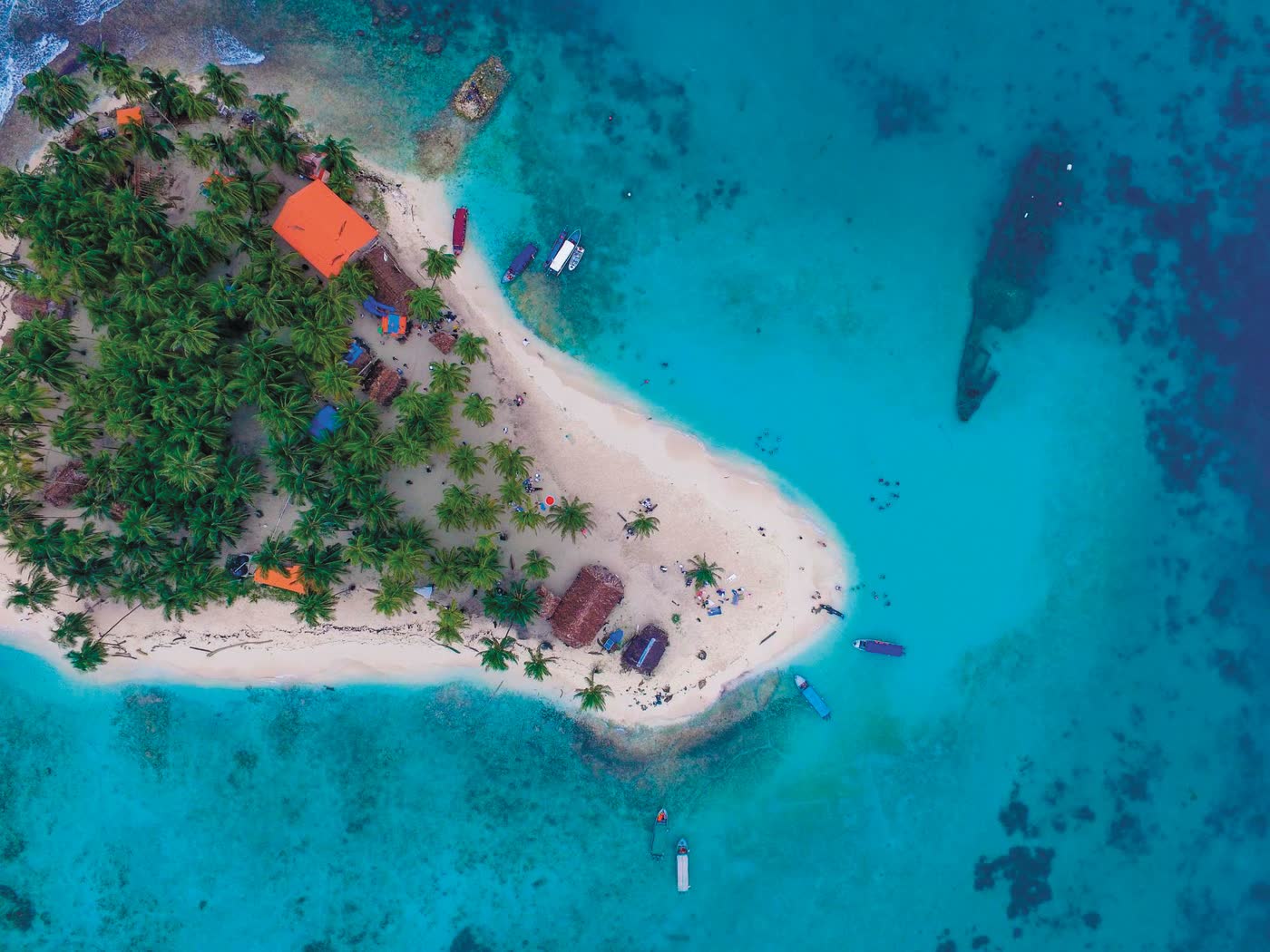
“Sandbanks” Natural Swimming Pools
One of the tours that is included either in a day trip or when staying, as well as one of the favorites is to the natural swimming pools called Sandbanks, in the middle of the ocean. The story goes that long ago there were islands (more than 100 years ago) and were flooded as a result of a Tsunami that hit the archipelago. Here tourists can get off the boat without any problem since the sea water reaches waist level and where you can find starfish, yes, without touching them or taking them out of the water.
Cayos Holandeses
Remote islands located at the northwest end of the Guna Yala archipelago. At nine miles (15 km) from the mainland, which is why they are the most remote and considered the most beautiful islands in the entire Comarca, since it has the largest reefs in Guna Yala.
In this destination there are no cabins, you can only camp on one of those islands with the prior permission of the Guna Congress. Some operators rent tents with an inflatable mattress for approximately $20.00 if you don’t have one.
Sunken Ship and Perro Chico Island
According to the Gunas, in 1958 a Colombian ship named “Buenaventura” traveled from Colon province with merchandise, including alcoholic beverages. The boat brushed against some reefs and despite attempts to tow it, the ship went up in flames and sank where it is today.
Isla Perro Chico is the most visited island in the Cayos Limones. They have Guna-style cabins that bring the visitor closer to their culture. It also includes the three meals during stays and delicious lunches during the day. Here it is possible to play beach volleyball, board games and make bonfires while listening to Guna stories. They also make trip to other islands, especially Isla Diablo (Dad Igwa) which is right in front. The most popular activity is snorkeling around the sunken ship.
Pelican Island
The original Guna name is Gorgidub. This island located northwest of Panama is very famous for appearing in the tv series “La Casa de Papel” where two of the protagonists take refuge in this paradise in the third season.
Tour operators offer packages to visit this island and its surroundings, where you can paddle, kayak and snorkel.
Chichime Island
This island is located 45 minutes from the port, and has one of the largest beaches within Cayo Limones. In it there are wooden cabins with shared bathrooms. Here you can stay as long as you want paying $35.00 in advance. If you want to camp you pay $10.00 a night or choose a cabin that costs close to $100.00 a night.
